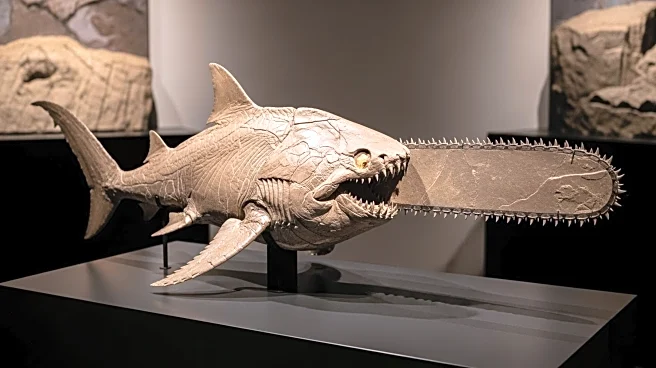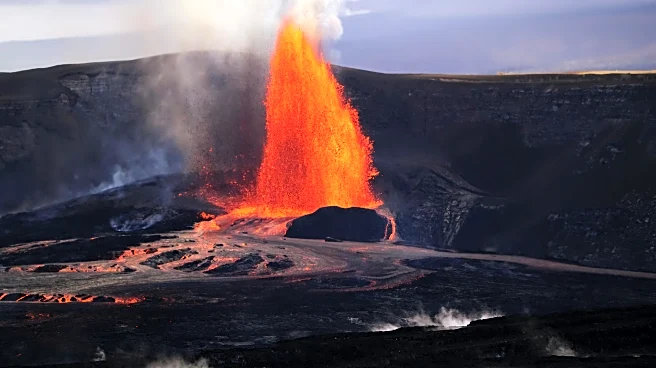What's Happening?
Researchers have introduced a nonlinear viscoelastic-plastic (NVEP) creep model to predict long-term surface subsidence caused by mining activities. This model aims to enhance the accuracy of subsidence predictions and facilitate long-term deformation
analysis. The study, published in Scientific Reports, focuses on understanding stratum creep and its impact on ground stability during and after mining. The NVEP model captures three distinct stages of rock deformation: decaying creep, steady-state creep, and accelerated creep. It builds on the classic Burgers model by adding a stress-dependent threshold and a nonlinear viscoplastic component. The model was calibrated using a genetic algorithm to optimize parameters based on data from a nearby mining site. The simulation results revealed a three-phase pattern of ground movement, with subsidence following an exponential decay.
Why It's Important?
The development of the NVEP model is significant for geotechnical engineering as it offers a more accurate tool for predicting and managing mining-induced subsidence. This model can help mitigate geotechnical risks associated with underground mining, such as damage to infrastructure, disruption of groundwater flow, and reduction in soil quality. By providing a reliable prediction of ground stability, the model can facilitate safer infrastructure development in post-mining areas. The research also suggests that integrating real-time monitoring and machine learning could further improve adaptability and prediction accuracy, potentially benefiting other subsurface activities like tunneling and underground storage.
What's Next?
The researchers recommend further measures to reduce subsidence risk, such as backfilling goafs and limiting single-seam mining thickness. These practices can help reduce surface deformation and shorten the waiting period before infrastructure development. The team suggests applying this approach to other subsurface activities like tunneling and underground storage. Integrating real-time monitoring and machine learning could further improve adaptability and prediction accuracy.
Beyond the Headlines
This research offers a significant step forward in predicting and managing mining-induced subsidence. By combining the NVEP creep model with numerical simulation and genetic algorithms, it provides a powerful tool for understanding long-term ground behavior. Its implementation in FLAC3D and strong alignment with field data make it a valuable asset in geotechnical engineering.














